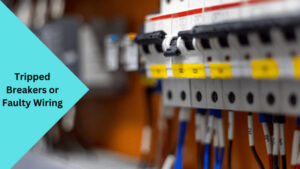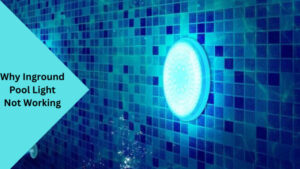Welcome to our comprehensive guide on troubleshooting and fixing inground pool lights. There’s nothing quite like a beautifully lit pool, but what happens when your pool light stops working? In this blog post, we’ll explore the top five reasons why your inground pool light may not be working and provide solutions to help you get it up and running again. Whether you’re a pool owner or a professional pool technician, this guide will equip you with the knowledge to identify and address common pool light malfunctions effectively.
Common Causes of Inground Pool Light Malfunctions
Bulb Issues: Burned Out or Loose Bulb Connections
One of the most common reasons for a pool light not working is a burned-out bulb or loose connections. Over time, pool light bulbs can deteriorate and lose their brightness or stop working altogether. Loose connections can also prevent the electricity from reaching the bulb, resulting in a non-functional light. It’s essential to inspect both the bulb and its connections to determine if this is the cause of the problem.
Power Supply Problems: Tripped Breakers or Faulty Wiring

Another reason why your inground pool light may not be working is power supply issues. Tripped breakers or faulty wiring can disrupt the electrical flow, rendering the light inoperable. Understanding your pool’s electrical system and troubleshooting potential power supply problems is crucial to identifying and resolving the issue.
Timer Malfunctions: Incorrect Settings or Faulty Timer
If your pool light fails to turn on or off according to your desired schedule, the problem may lie with the timer. Incorrect timer settings or a faulty timer mechanism can disrupt the light’s functioning. We’ll provide guidance on how to troubleshoot and resolve timer-related issues to restore your pool’s lighting system.
GFCI Issues: Faulty Ground Fault Circuit Interrupter
The Ground Fault Circuit Interrupter (GFCI) is a vital safety device that protects against electrical shock. If the GFCI malfunctions, it can interrupt the power supply to your pool light, causing it to stop working. Understanding how the GFCI works and diagnosing potential GFCI issues are crucial steps in resolving pool light malfunctions.
Photocell Problems: Dirty or Faulty Photocell
A photocell is responsible for detecting ambient light and automatically turning the pool light on and off based on the outdoor lighting conditions. If the photocell is dirty or faulty, it may cause the pool light to malfunction. We’ll walk you through checking and cleaning your photocell, as well as addressing any potential issues that may arise.
How to Fix an Inground Pool Light: Step-by-Step Guide
Step 1: Safety First!
Before diving into any pool light repairs, your safety should be the top priority. Ensure you have the necessary protective gear, such as safety goggles and gloves. It’s also essential to turn off the power supply to the pool light at the circuit breaker to avoid any potential electrical hazards.
Step 2: Check the Bulb and Connections
Begin the troubleshooting process by inspecting the bulb and connections. Start by removing the lens cover and gently unscrewing the bulb. Examine the bulb for any signs of damage or burnout. If the bulb appears fine, check the connections for any loose or corroded wires. Tighten any loose connections and clean any corrosion present.
Step 3: Inspect the Power Supply
After confirming the bulb and connections are in good condition, move on to inspecting the power supply. Check the circuit breaker connected to the pool light to ensure it is functioning correctly and hasn’t tripped. If it has tripped, reset the breaker and test the light. Additionally, inspect the wiring from the circuit breaker to the pool light for any visible damage or loose connections.
Step 4: Troubleshoot the Timer
If the pool light is still not working, it’s time to troubleshoot the timer. Ensure that the timer is set correctly for the desired on/off schedule. If the timer settings are accurate, inspect the timer mechanism for any signs of damage or dysfunction. In case of a faulty timer, consider replacing it with a new one.
Step 5: Test the GFCI
The next step is to test the Ground Fault Circuit Interrupter (GFCI). Locate the GFCI outlet or breaker that controls the power supply to the pool light. Press the “Test” button on the GFCI outlet or breaker to simulate a ground fault and interrupt the power. If the power supply is cut off, press the “Reset” button to restore the power and check if your pool light turns on.
Step 6: Examine the Photocell
Lastly, examine the photocell responsible for automatic on/off control of your pool light. Locate the photocell and check for any dirt, debris, or physical damage. Clean the photocell using a soft cloth and a gentle cleaning solution. If cleaning doesn’t resolve the issue, consider replacing the faulty photocell.
Did you know what you should do if Softub Control Panel Not Working: A Comprehensive Troubleshooting Guide
Preventive Maintenance Tips to Avoid Inground Pool Light Issues
Regular Cleaning and Inspection
To ensure your pool lights stay in optimal condition, incorporate regular cleaning and inspection into your pool maintenance routine. Regularly check the bulbs, connections, and lenses for any issues. Clean the lens covers and remove any debris or dirt that may accumulate over time.
Updating Your Pool Lighting System
If you experience frequent pool light malfunctions or outdated equipment, consider upgrading your pool lighting system. Newer technologies offer improved durability, energy efficiency, and ease of maintenance, reducing the likelihood of future issues.
Professional Check-ups and Maintenance
Schedule regular check-ups and maintenance visits with a professional pool technician. They have the expertise to thoroughly inspect and diagnose potential problems before they escalate. Regular maintenance can help catch minor issues early on and save you from costly repairs down the road.
Protecting the Power Supply and Wiring
Properly protecting your pool light’s power supply and wiring is crucial in avoiding malfunctions. Ensure all power connections are securely covered and shielded from the elements. Additionally, use conduit or conduit adapters to protect the wiring from accidental damage or exposure to water.
Frequently Asked Questions (FAQs)
How much does it cost to fix an inground pool light?
The cost of fixing an inground pool light can vary depending on the issue and the extent of repairs needed. Basic repairs such as replacing a bulb or tightening loose connections can be relatively inexpensive. However, more complex issues like rewiring or replacing the entire lighting system may cost more. It’s best to consult with a professional pool technician for an accurate cost estimate.
Can I replace the pool light bulb myself?
Replacing the pool light bulb is a task that can be done by many pool owners. However, it’s crucial to follow safety precautions and turn off the power supply before attempting any repairs. If you’re unsure or not confident in your abilities, it’s recommended to seek assistance from a qualified pool technician.
Why is my pool light not turning on at night?
If your pool light is not turning on at night, several factors may be causing the issue. It could be due to a burnt-out bulb, loose connections, timer malfunctions, power supply problems, GFCI issues, or photocell problems. Consult this guide to troubleshoot the specific cause and resolve the issue accordingly.
Did you know How Does a Hot Tub Work: Understanding How They Operate
Conclusion
A non-functional inground pool light can put a damper on your poolside enjoyment. By understanding the top five reasons why your pool light may not be working and following our step-by-step guide to fix it, you’ll be well-equipped to tackle any issues that arise. Remember to prioritize safety, conduct regular maintenance, and consider upgrading your pool lighting system for enhanced performance and longevity. Don’t let a minor malfunction keep you in the dark – get your pool light shining brightly again!

Greetings, fellow pool enthusiasts! I’m Turner Davis, your dedicated guide to the world of pool care and maintenance. With over a decade of experience in the field, I’ve made it my mission to transform ordinary pools into extraordinary aquatic retreats.

